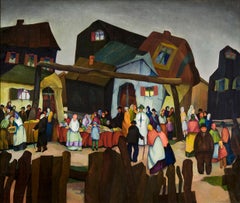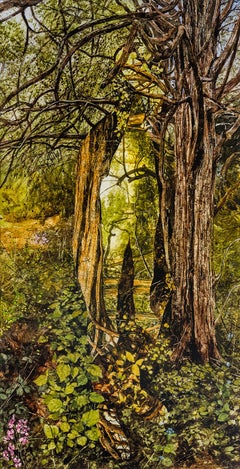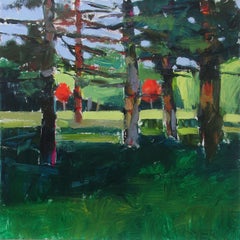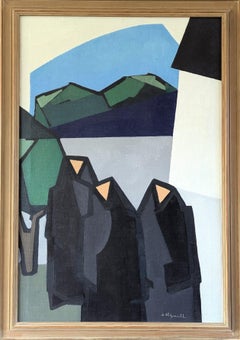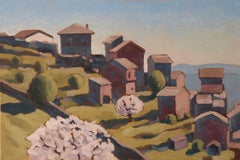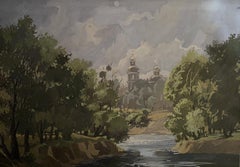Items Similar to The Old Monastery Wall
Want more images or videos?
Request additional images or videos from the seller
1 of 8
William S. SchwartzThe Old Monastery Wall1927
1927
$40,000
£30,716.16
€35,236.27
CA$56,204.69
A$62,945.71
CHF 32,844.04
MX$768,854.78
NOK 417,871.76
SEK 393,894.22
DKK 262,963.96
About the Item
Signed (at lower left): WILLIAM S. SCHWARTZ
- Creator:William S. Schwartz (1896-1977, American, Russian)
- Creation Year:1927
- Dimensions:Height: 30 in (76.2 cm)Width: 36 in (91.44 cm)Depth: 1.5 in (3.81 cm)
- Medium:
- Movement & Style:
- Period:
- Condition:
- Gallery Location:New York, NY
- Reference Number:Seller: APG 5401.401stDibs: LU236657342
About the Seller
5.0
Recognized Seller
These prestigious sellers are industry leaders and represent the highest echelon for item quality and design.
Established in 1952
1stDibs seller since 2010
35 sales on 1stDibs
Typical response time: 3 hours
Associations
Art Dealers Association of America
- ShippingRetrieving quote...Shipping from: New York, NY
- Return Policy
Authenticity Guarantee
In the unlikely event there’s an issue with an item’s authenticity, contact us within 1 year for a full refund. DetailsMoney-Back Guarantee
If your item is not as described, is damaged in transit, or does not arrive, contact us within 7 days for a full refund. Details24-Hour Cancellation
You have a 24-hour grace period in which to reconsider your purchase, with no questions asked.Vetted Professional Sellers
Our world-class sellers must adhere to strict standards for service and quality, maintaining the integrity of our listings.Price-Match Guarantee
If you find that a seller listed the same item for a lower price elsewhere, we’ll match it.Trusted Global Delivery
Our best-in-class carrier network provides specialized shipping options worldwide, including custom delivery.More From This Seller
View AllCliffs Near Early's Farm
By Randall Exon
Located in New York, NY
Randall Exon (b. 1956) was born in Vermillion, South Dakota. Exon earned his B.F.A. in painting from Washburn University in Topeka, Kansas, and an M.F.A. at the University of Iowa. I...
Category
Early 2000s Contemporary Landscape Paintings
Materials
Linen, Oil
Untitled [Abstraction]
By George L.K. Morris
Located in New York, NY
Gouache on paper, 18 7/8 x 14 3/4 in.
Signed (at lower right): Morris; (with monogram, on the back): GLKM [monogram] / 1932 [sic]
Executed circa late 1940s
A passionate advocate of abstract art during the 1930s and 1940s, George L. K. Morris was active as a painter, sculptor, editor, and critic. An erudite man with an internationalist point of view, Morris
eschewed the social, political, and figural concerns that preoccupied so many artists of Depression-era America, believing that painters should focus their attention on the beauty, refinement, and simplicity of pure form instead. His goal, he said, was “to wedge the expression further and further into the confines of the canvas until every shape takes on a spatial meaning” (as quoted in Ward Jackson, “George L. K. Morris: Forty Years of Abstract Art,” Art Journal 32 [Winter 1972–73], p. 150).
Born into an affluent family in New York City, Morris was a descendent of General Lewis Morris, a
signer of the Declaration of Independence. From 1918 until 1924, he attended the Groton School in
Connecticut, studying classics and art. He continued to focus on literature and art while attending
Yale University (1924–28), an experience that prepared him well for his future activity as an artist-critic. After graduating in 1928, Morris studied at the Art Students League of New York, working
under the realist painters John Sloan and Kenneth Hayes Miller, as well as Jan Matulka, the only
modernist on the faculty. In the spring of 1929, Morris traveled to Paris with Albert E. Gallatin, a
family friend and fellow painter who introduced him to leading members of the Parisian avant-garde, including Jean Arp, Pablo Picasso, Georges Braque, Jean Hélion, and Piet Mondrian. Morris also took classes at the Académie Moderne, studying under Fernand Léger and Amédée Ozenfant, important exponents of Synthetic Cubism who influenced his aesthetic development. Indeed, after experimenting with the simplified forms of Modernism for a few years, Morris moved on to abstraction by 1934, adopting a hard-edged, geometric approach inspired by Leger’s cubist style and the biomorphic shapes of Arp and Joan Miró.
Following his return to New York in 1930, Morris built a white-walled, open-spaced studio (inspired
by that of Ozenfant, which had been designed by Le Corbusier) on the grounds of Brockhurst, his
parents’ 46-acre estate in Lenox, Massachusetts. In 1935, he married the painter and collagist Estelle “Suzy...
Category
1940s American Modern Abstract Paintings
Materials
Paper, Gouache
Old Country Bazaar
By William S. Schwartz
Located in New York, NY
Oil on canvas, 36 x 42 in.
Signed, dated, and inscribed (at lower right): WILLIAM S. SCHWARTZ 1926; (on the back): “OLD COUNTRY BAZAAR” / BY / WILLIAM S. SCHWARTZ / 1926
RECORDED: C. H. Bonte, “122nd Annual opens at Pennsylvania Academy,” in The Philadelphia Inquirer, Jan. 30, 1927
EXHIBITED: The Art Institute of Chicago, 1926, The Thirty-Ninth Annual Exhibition of American Paintings and Sculpture, no. 174 // The Pennsylvania Academy of the Fine Arts, Philadelphia, 1927, The One-Hundred-and-Twenty Second Annual Exhibition, p. 37 no. 181 // The Chicago Culture Club...
Category
20th Century American Modern Paintings
Materials
Canvas, Oil
Many-Worlds Interpretation (C.D.H.S.c)
By Colin Hunt
Located in New York, NY
Looking at a painting by Colin Hunt is like watching someone pass through a hole in our consciousness. As the landscape refracts through the sitter’s absence and fills that emptiness...
Category
2010s Abstract Abstract Drawings and Watercolors
Materials
Watercolor
Excavation
By Charles Houghton Howard
Located in New York, NY
Charles Houghton Howard was born in Montclair, New Jersey, the third of five children in a cultured and educated family with roots going back to the Massachusetts Bay colony. His father, John Galen Howard, was an architect who had trained at M.I.T. and the École des Beaux Arts in Paris, and apprenticed in Boston with H. H. Richardson. In New York, the elder Howard worked for McKim, Mead and White before establishing a successful private practice. Mary Robertson Bradbury, Charles’s mother, had studied art before her marriage. John Galen Howard moved his household to California in 1902 to assume the position of supervising architect of the new University of California campus at Berkeley and to serve as Professor of Architecture and the first Dean of the School of Architecture (established in 1903). The four Howard boys grew up to be artists and all married artists, leaving a combined family legacy of art making in the San Francisco Bay area that endures to this day, most notably in design, murals and reliefs at the Coit Tower and in buildings on the Berkeley campus.
Charles Howard graduated from the University of California at Berkeley in 1921 as a journalism major, and pursued graduate studies in English at Harvard and Columbia Universities before embarking on a two-year trip to Europe. Howard went to Europe as a would-be writer. But a near-religious experience, seeing a picture by Giorgione in a remote town outside of Venice, proved a life-altering epiphany. In his own words, “I cut the tour at once and hurried immediately back to Paris, to begin painting. I have been painting whenever I could ever since” (Charles Howard, “What Concerns Me,” Magazine of Art 39, no. 2 [February 1946], p. 63). Giorgione’s achievement, in utilizing a structured and rational visual language of art to convey high emotion on canvas, instantly convinced Howard that painting, and not literature, offered the best vehicle to express what he wanted to say. Howard returned to the United States in 1925, confirmed in his intent to become an artist.
Howard settled in New York and supported himself as a painter in the decorating workshop of Louis Bouché and Rudolph Guertler, where he specialized in mural painting. Devoting spare time to his own work, he lived in Greenwich Village and immersed himself in the downtown avant-garde cultural milieu. The late 1920s and early 1930s were the years of Howard’s art apprenticeship. He never pursued formal art instruction, but his keen eye, depth of feeling, and intense commitment to the process of art making, allowed him to assimilate elements of painting intuitively from the wide variety of art that interested him. He found inspiration in the modernist movements of the day, both for their adherence to abstract formal qualities and for the cosmopolitan, international nature of the movements themselves. Influenced deeply by Surrealism, Howard was part of a group of American and European Surrealists clustered around Julien Levy. Levy opened his eponymously-named gallery in 1931, and rose to fame in January 1932, when he organized and hosted Surrealisme, the first ever exhibition of Surrealism in America, which included one work by Howard. Levy remained the preeminent force in advocating for Surrealism in America until he closed his gallery in 1949. Howard’s association with Levy in the early 1930s confirms the artist’s place among the avant-garde community in New York at that time.
In 1933, Howard left New York for London. It is likely that among the factors that led to the move were Howard’s desire to be a part of an international art community, as well as his marriage to English artist, Madge Knight...
Category
20th Century American Modern Abstract Paintings
Materials
Canvas, Oil
Untitled (Midday)
By Colin Hunt
Located in New York, NY
In Colin Hunt’s new paintings, myriad tiny rocks, grains of sand, and strands of rockweed form a coastal beach, while lush forests pierce a crystalline sky. Elsewhere, palpable mists...
Category
2010s Contemporary Landscape Drawings and Watercolors
Materials
Paper, Watercolor
You May Also Like
Monastery V, Painting, Acrylic on Canvas
By Janet Dyer
Located in Yardley, PA
Summery colors, scene of monastery grounds :: Painting :: Expressionism :: This piece comes with an official certificate of authenticity signed by the artist :: Ready to Hang: Yes ::...
Category
2010s Expressionist Paintings
Materials
Acrylic
Mid-Century Modern Geometric Abstract Oil Painting - Mountain Monastery
Located in Bristol, GB
MOUNTAIN MONASTERY
Size: 74 x 52.5 cm (including frame)
Oil on canvas
A large and captivating mid-century modernist geometric abstract painting, executed in oil onto canvas.
The co...
Category
Mid-20th Century Modern Figurative Paintings
Materials
Oil, Canvas
mountain villages, Painting, Oil on Canvas
By Nikolai Kraneis
Located in Yardley, PA
painted after a sketch done on location in Extremadura, Spain :: Painting :: Contemporary :: This piece comes with an official certificate of authenticity signed by the artist :: Rea...
Category
2010s Contemporary Paintings
Materials
Oil
Monastery, Original oil Painting, Ready to Hang
Located in Granada Hills, CA
Artist: Alexander Litvinov
Work: Original oil painting, handmade artwork, one of a kind
Medium: Oil on Cardboard
Style: Impressionism
Year: 1990
Title: Monastery
Size: 11.5" x 15.5"...
Category
2010s Impressionist Figurative Paintings
Materials
Oil, Cardboard
Hillside and Stream, early 20th century modernist Cleveland School painting
Located in Beachwood, OH
Clara Deike (American, 1881-1964)
Hillside and Stream, 1916
Gouache on paper
Signed and dated lower right
22 x 18 inches
25.5 x 21.5 inches, framed
A graduate of the Cleveland Schoo...
Category
1910s American Modern Figurative Paintings
Materials
Gouache
Hillside Barns
By Zygmund Jankowski
Located in Gloucester, MA
Zygmund Jankowski (1925–2009) painted traditional subjects with exuberant irreverence for traditional rules of color, composition, and perspective. He disparaged imitation and deligh...
Category
1980s Contemporary Landscape Paintings
Materials
Canvas, Oil
Price Upon Request
More Ways To Browse
Antique Haunted
California Wine Country Art
Carpe Diem
Dan Kelly
Eugene Galien Laloue
Frederic Church
Genevieve Zondervan
Georges Louis Claude
H Claude Pissarro Pastel
Jose Weiss
Oil Painting Beecher
Pink Barn
Seaman Painting
Tahoe Paintings
Thomas Shaw
Albert Clark Oil Paintings
Andre Philibert
California Gold Rush Painting
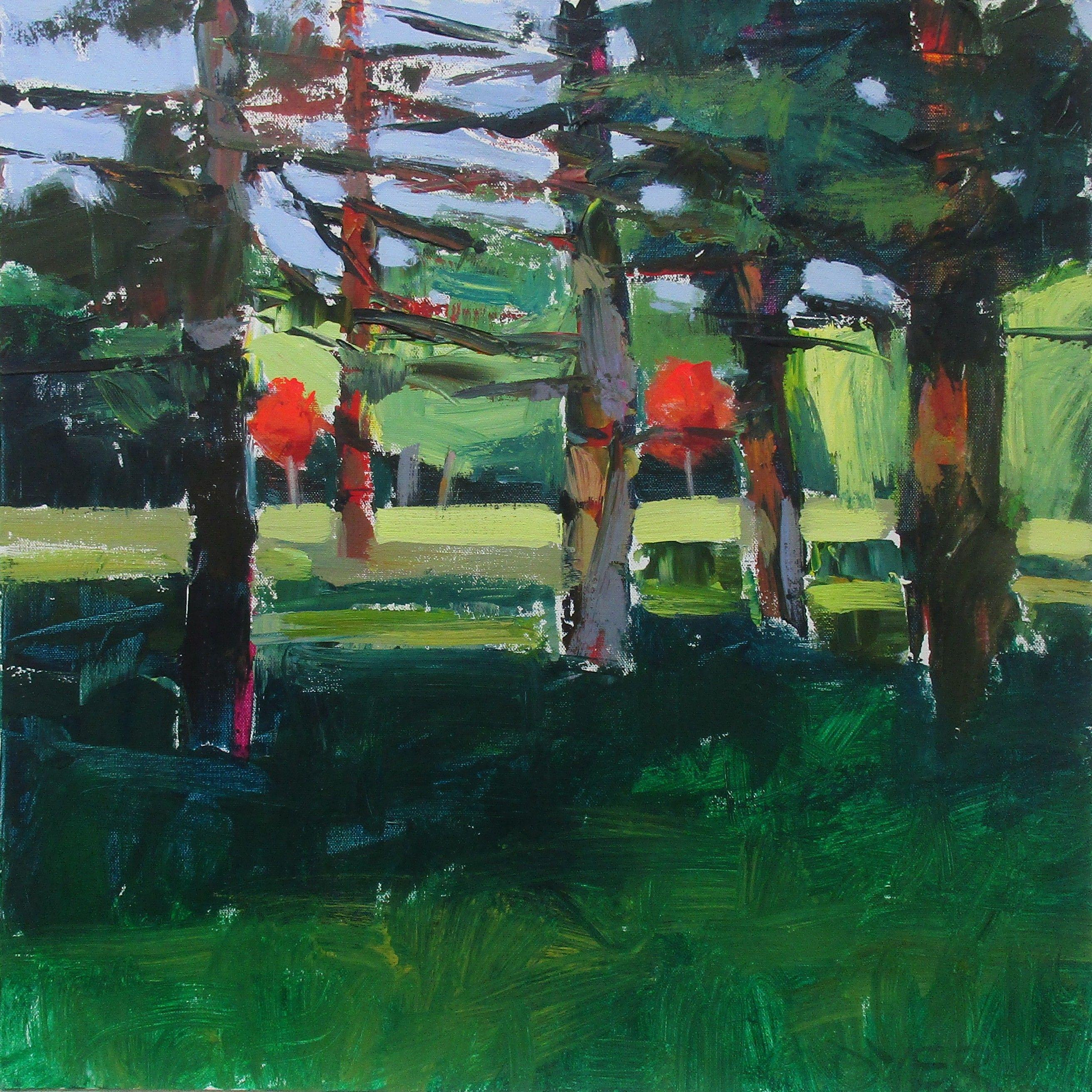
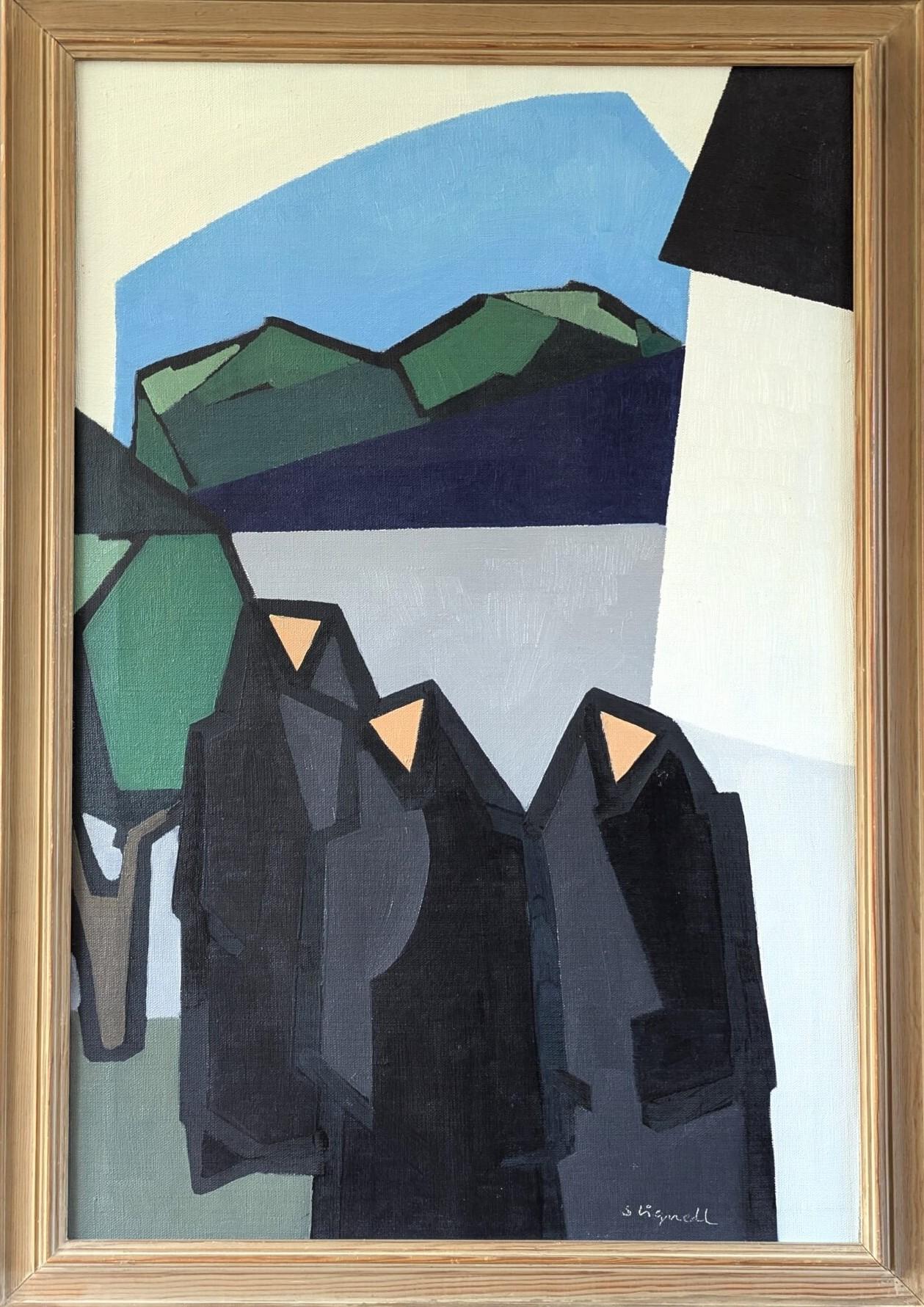
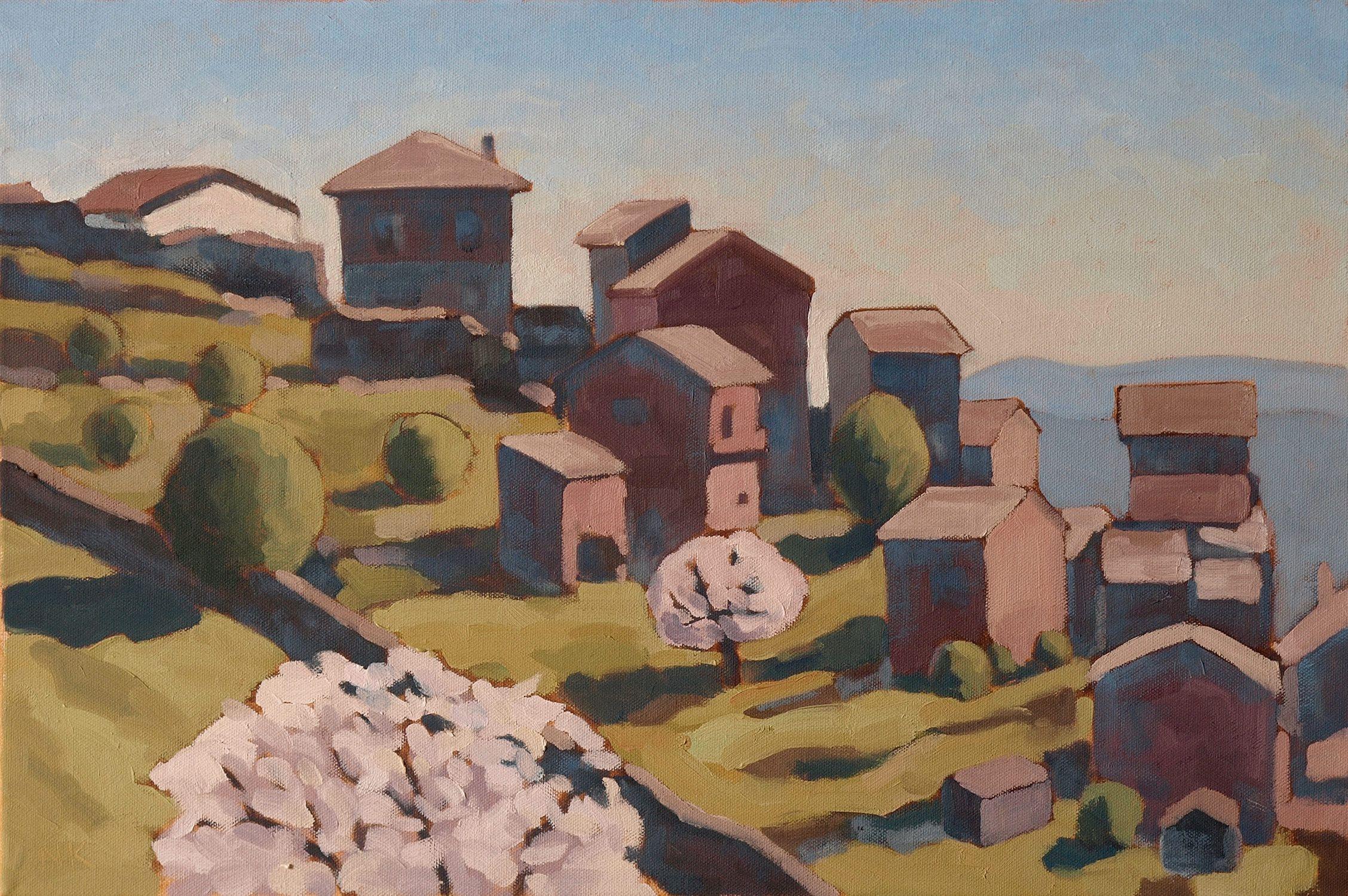
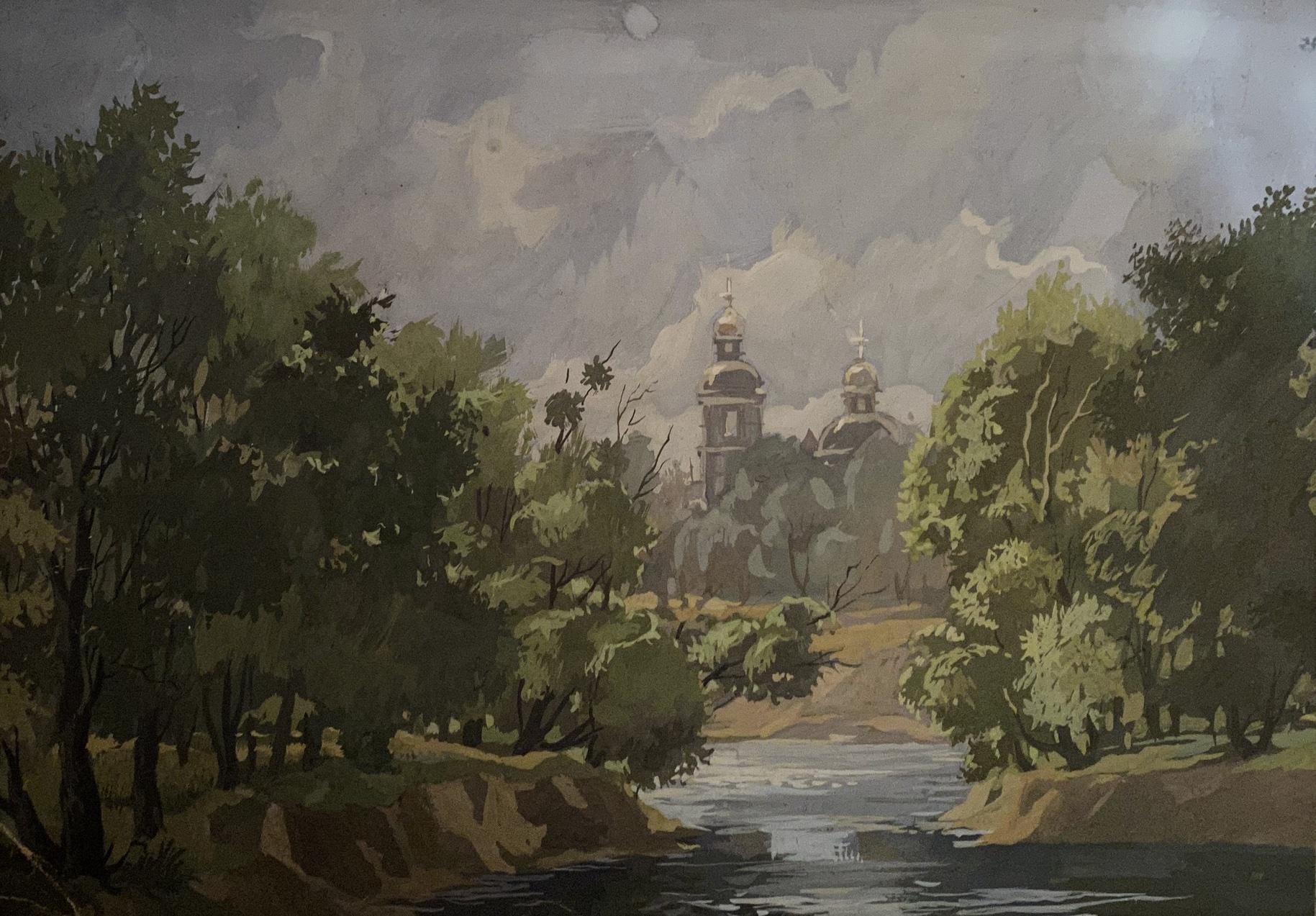
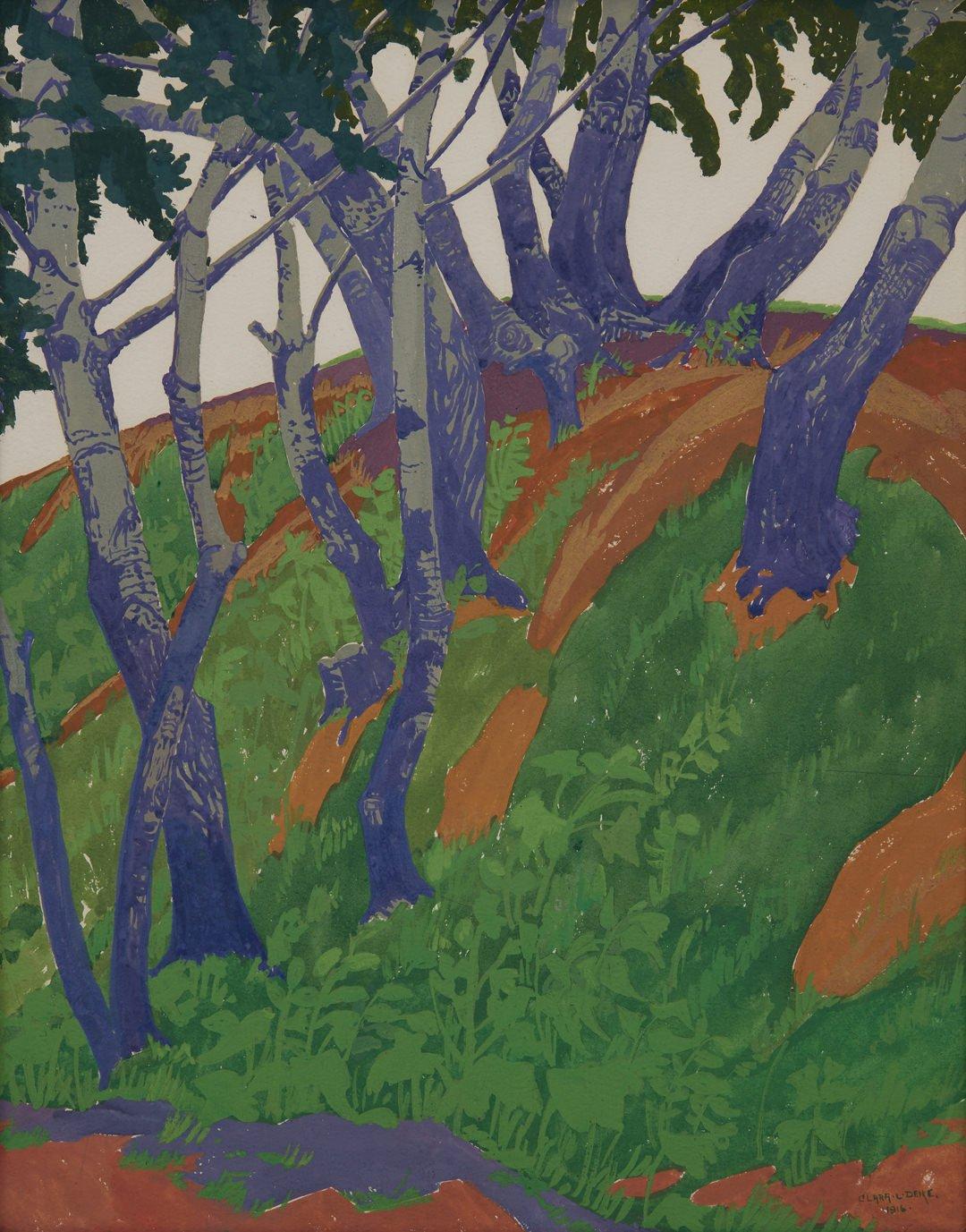
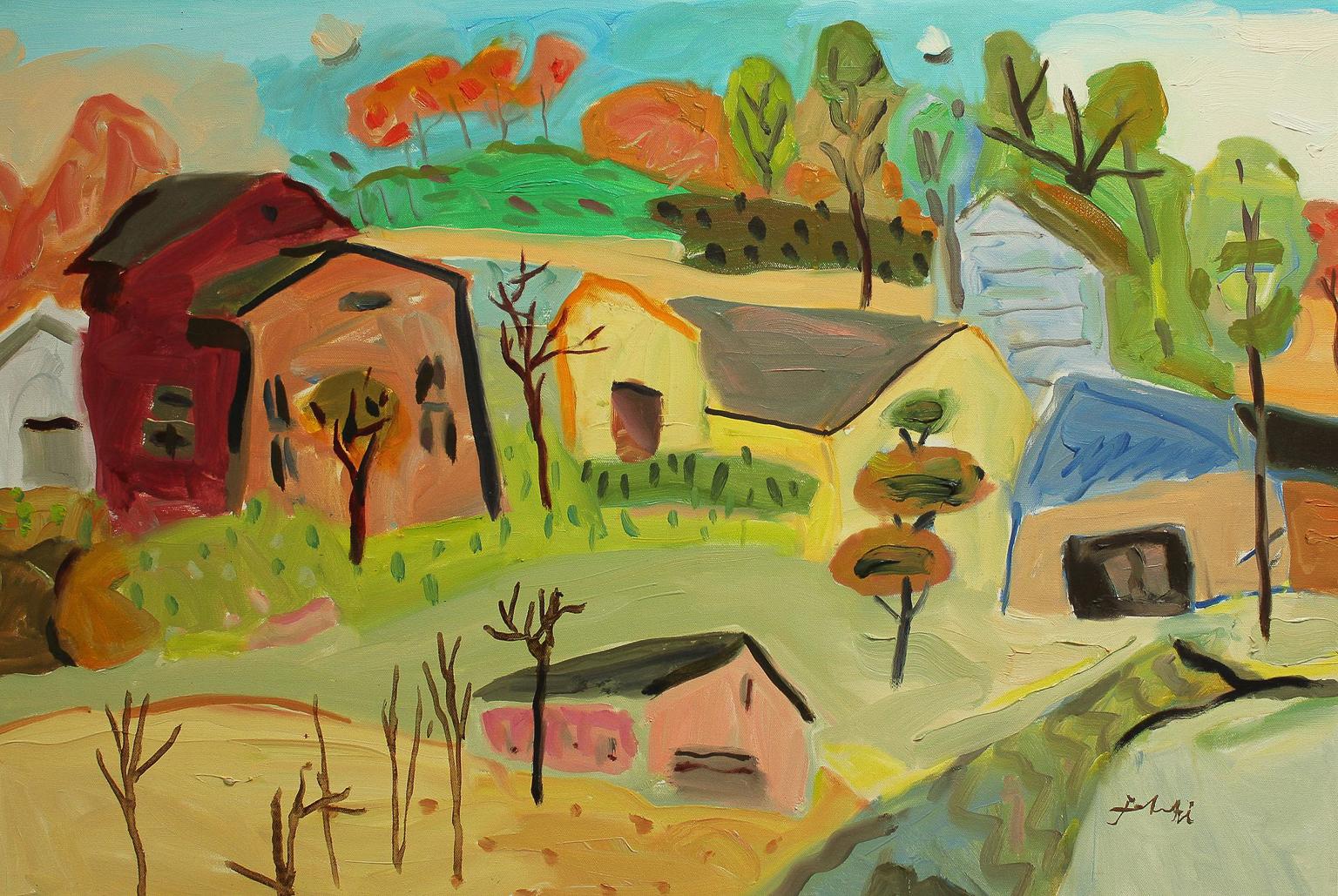
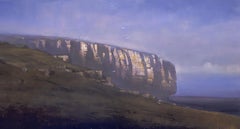
![Untitled [Abstraction]](https://a.1stdibscdn.com/george-lk-morris-1905-1975-american-paintings-untitled-abstraction-for-sale/a_23/1652214284908/APG_8941_unfr_master.jpg?width=240)
